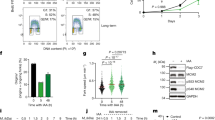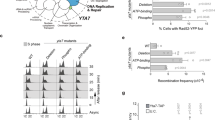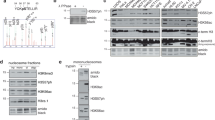Abstract
We cloned a cDNA coding for a novel serine/threonine kinase, Dlk, a protein of 448 amino acids with a predicted molecular weight of 51.3 kDa. The kinase domain shows 81% amino acid sequence identity to the recently identified DAP kinase (death associated protein kinase) (), therefore, the new kinase was called Dlk, for DAP like kinase. Northern analyses revealed a single mRNA species of 1.7 kb which was ubiquitously expressed. However, expression levels varied considerably in different cell lines and tissues. Moreover, expression was downregulated upon UV irradiation. Dlk exhibited autophosphorylation activity, predominantly towards threonine residues and phosphorylated the regulatory subunit of myosin light chain, but in this case exclusively at serine residues. Dlk seems to be tightly associated with insoluble nuclear structures, presumably chromatin, since it was resistant to various rigorous extraction procedures but it was partially released upon DNase I digestion of nuclei. Consistent with this, purified Dlk phosphorylated core histones H3, H2A and H4 as exogenous substrates and endogenous histone H3 in kinase assays with nuclear extracts. Expression as GFP-fusion protein revealed a diffuse as well as a speckled nuclear staining suggesting an association with replication or transcription centers.
This is a preview of subscription content, access via your institution
Access options
Subscribe to this journal
Receive 50 print issues and online access
$259.00 per year
only $5.18 per issue
Buy this article
- Purchase on SpringerLink
- Instant access to full article PDF
Prices may be subject to local taxes which are calculated during checkout
Similar content being viewed by others
Author information
Authors and Affiliations
Rights and permissions
About this article
Cite this article
Kögel, D., Plöttner, O., Landsberg, G. et al. Cloning and characterization of Dlk, a novel serine/threonine kinase that is tightly associated with chromatin and phosphorylates core histones. Oncogene 17, 2645–2654 (1998). https://doi.org/10.1038/sj.onc.1202204
Received:
Revised:
Accepted:
Published:
Issue Date:
DOI: https://doi.org/10.1038/sj.onc.1202204



